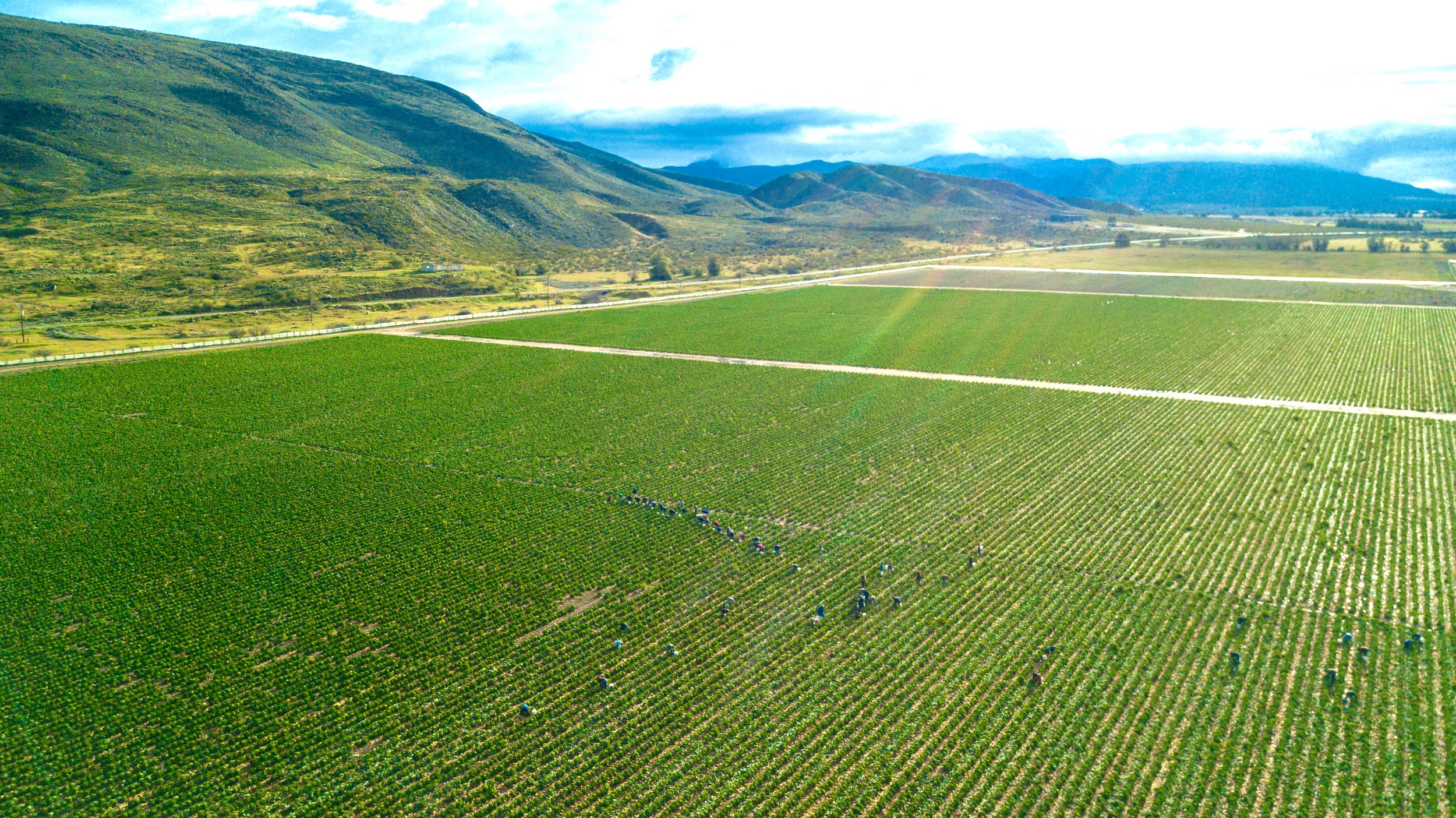Welcome to Blue Book!
Are you ready to join the thousands of companies who rely on Blue Book to drive smarter decisions? View our plans and get started today!
Still have questions? We’d love to show you what Blue Book can do for you. Drop us a line– we’ve been waiting for you.

In this article

Uncertainty is the word that describes the 2025 outlook for the produce industry in Salinas Valley and Monterey County, CA.
As Salinas Valley heads into the growing season, the industry faces the impact of tariffs, immigration raids targeting agricultural workers, ongoing inflation, and rising labor costs—all combined with the ever-present threats from weather and crop pests.
Growing Pains
Growers in Salinas Valley have had difficulties of one sort or another for the last several years. Timing has always been crucial when it comes to crops, as too early or too late have myriad consequences.
Weather, of course, can be cruel with extreme temperature variations affecting vulnerable plants.
Producers had a rough go of it in 2023, due mainly to heavy rains and significant flooding that reduced the number of acres planted and shortened the growing season. This wreaked havoc with supply, demand, and returns for some crops.
Chris Reade, vice president of sales for Salinas-based broker and distributor Produce West, Inc. BB #:115015, knows a thing or two about it. For Produce West, which handles a wide array of vegetables, as well as berries and stone fruit, it’s all about timing.
As the Salinas Valley’s season begins to ramp up, the Southwest desert growing regions, where Produce West sources winter vegetables, is winding down. Reade says demand for desert-grown produce has been down, despite a big crop, due to bad weather on the East Coast.
“Most of the growers here (in the Salinas Valley) are about two weeks behind schedule,” observes Reade. He says it’s possible the later start in Salinas and earlier ending in the desert could create “a little more excitement” to increase demand with better prices.
“Whether you’re going out to eat or to the grocery store, the dollar isn’t going as far—and labor is a component that’s definitely contributing to the increase in costs.”
Labor Concerns
Last year Salinas area growers were also affected by a different type of financial impact: the initial increase of California’s minimum wage to $16 per hour, followed by another step up to $16.50 per hour as of January 1, 2025. Each added pressure to the state’s perishables supply chain.
Norm Groot, executive director of the Monterey County Farm Bureau, lays out the math. “In the last seven years we’ve seen labor costs go up by 125 percent,” he says.

Steve Koran, vice president of sales for grower and shipper Bengard Ranch, Inc. BB #:114792, is well aware. He agrees price points are up.
“Whether you’re going out to eat or to the grocery store, the dollar isn’t going as far—and labor is a component that’s definitely contributing to the increase in costs.”
Bengard Ranch has been farming in the Salinas Valley since the 1850s, soon after California became a state. As such, it has long-term relationships in the Valley with local labor and other industry suppliers.
But as farm worker populations age and housing costs increase, Koran says things are changing.
“In Salinas, we have a group that’s been with us for many years. As people retire, it’s becoming more of challenge, so H-2A (the federal visa program for foreign agricultural workers) is definitely becoming a bigger component.”
As of this writing, a promised crackdown on agricultural workers illegally in the United States has yet to come to the Salinas Valley, though the threat weighs heavily on everyone. “We hope it doesn’t happen, but we’re bracing for it,” notes Groot.
“All I’ve heard are different rumors and we haven’t been affected,” mentions Koran, though with the start of the Salinas Valley’s spring growing season just getting underway, there are few workers in the fields.
“We have a documented (hiring) process in our area but we don’t know if it’s going to be a concern.”
Chart Toppers
Agriculture continues to be Monterey County’s largest industry and is always at the mercy of Mother Nature.
In 2023, the gross value of Monterey County’s agricultural production was $4.3 billion, down 6.1 percent from 2022, according to the county’s 2023 crop report, the most recent figures available.
Agriculture’s total contribution to the local economy is valued at about $12 billion.
Strawberries remained the top crop with a gross production value of $903.8 million, a drop of 5.7 percent decrease from 2022. Monterey County and the Salinas Valley provide about 28 percent of the nation’s strawberries.
Well known for its lettuce and leafy greens, Salinas Valley provides about 61 percent of the nation’s leafy lettuce and 57 percent of head lettuce, according to the Monterey County Farm Bureau.
Leaf lettuce, including romaine and other varieties, continued to be the second most valuable crop at $782.1 million, a 7.2 percent decrease from 2022. Head lettuce, the third most valuable crop, was valued at $493.5 million a decrease of 9.8 percent from 2022.
Vegetable crops overall declined in value by 7.9 percent to $2.8 billion from 2022. Fruit and nut crops dropped in value 3.5 percent to $1.19 billion.
Broccoli remained in the county’s fourth largest crop with a 9.7 percent decrease from 2022 to $468.8 million.
“We see some changes in cropping patterns, mainly between vegetables and leafy greens.”
“We see some changes in cropping patterns, mainly between vegetables and leafy greens,” Groot explains. Total acreage for strawberries, the county’s leading crop, is holding steady at about 12,000 acres, he says.
Most of the shifts in the county’s crops, such as growing more Brussels sprouts, are due to consumer trends, according to Groot. He gives much of the credit to social media influencers. “I call it ‘what’s in fashion’ for what people are eating this year.”
What’s Ahead
There’s still uncertainty about tariffs. Even though they seem to be off the table for USMCA-compliant fruits and vegetables, they’re slated for other countries, so their impact continues to be a concern.
“If tariffs do stick, it might affect some of the higher value crops like strawberries,” Groot points out.
Other challenges involve federal personnel who have been immersed in Salinas Valley’s agriculture pursuits for years.
Sweeping federal budgets cuts are a risk at both the county and state level. How much impact these could have on Salinas and its environs is unknown.
The USDA Economic Research Service, however, says every $1 invested in agricultural research yields $20 in economic returns—so any cuts—combined with already high costs, tariffs, labor shortages, and weather anomalies—could have significant short- and long-term consequences.
Editor’s Note: Some content from a previous version of this article was removed due to misattribution.










